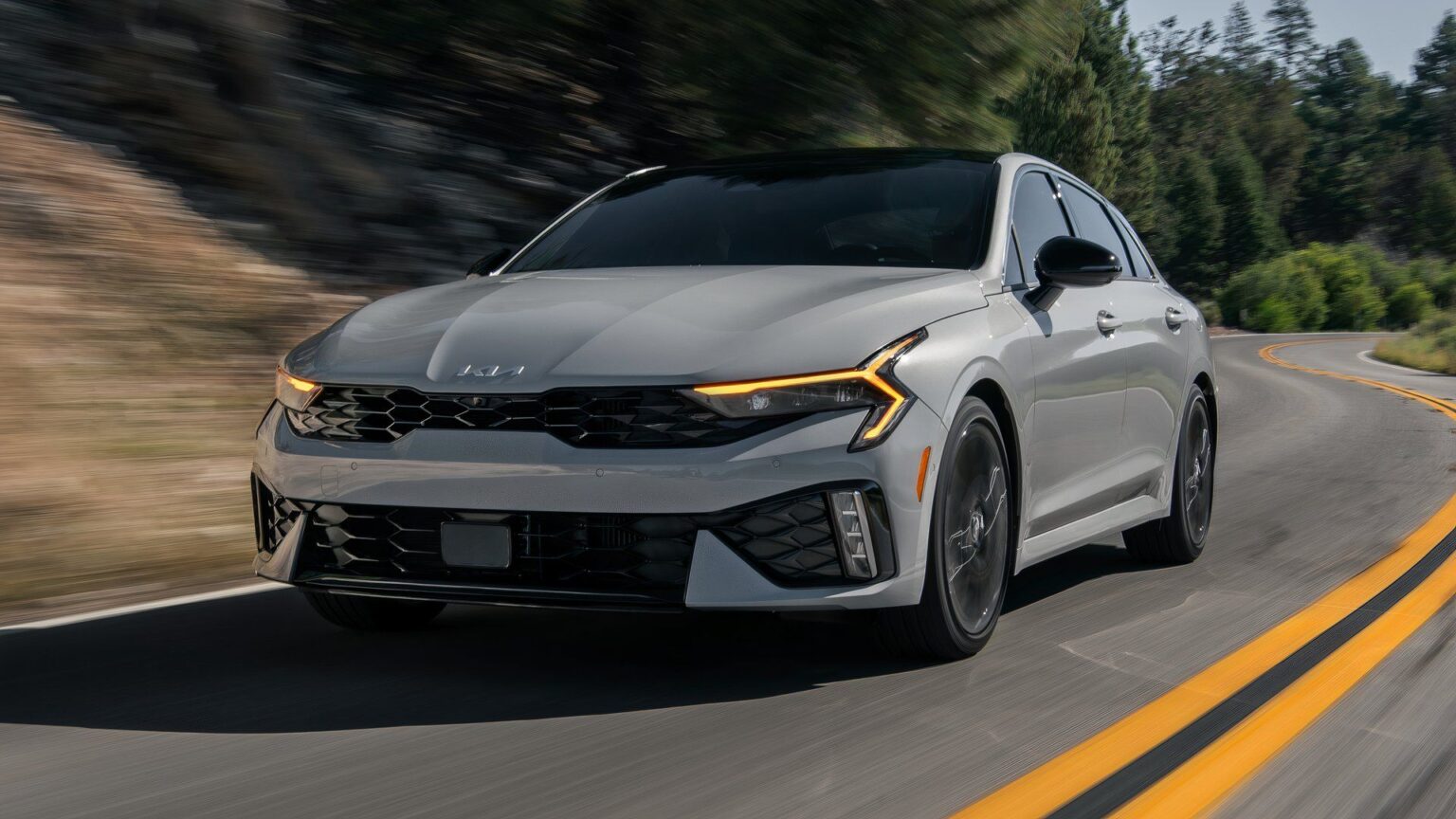Kia will ask some of its most price-conscious customers to fork over a bit more this year for a K5, one of the most affordable sedans on the market. The Camry competitor sees a $420 price change across the board despite relatively minor changes. In such a crowded segment full of cars like the Accord and more, we’re not so sure the price increase is justified, even if the K5 represents one of the most feature-packed values in its space.
K5 Prices Rise For 2026
The 2026 K5 will now start at $28,565 (including the $1,175 destination charge). A loaded EX model will now require $36,065 of your dollars, which also follows a huge $5,000 price increase from 2024’s prices. That was at least somewhat justified by new standard items like a heated wheel, updated sound system, and more. You can check out the full breakdown of trim costs year-over-year in the table below. All trims are front-drive inuless otherwise stated, and that $1,175 destination charge is included in both 2025 and 2026 prices.
|
Trim (FWD Unless Specified, Incl. Dest) |
2025 |
2026 |
Difference |
|---|---|---|---|
|
K5 LXS |
$28,145 |
$28,565 |
$420 |
|
K5 GT-Line |
$29,145 |
$29,565 |
$420 |
|
K5 GT-Line AWD |
$30,745 |
$31,165 |
$420 |
|
K5 GT |
$34,245 |
$34,665 |
$420 |
|
K5 EX |
$35,645 |
$36,065 |
$420 |
Kia Gives The K5 GT One New Thing In 2026
This time around, however, there aren’t changes like power folding mirrors or a powered driver’s seat to help justify the pricing changes across the lineup. The sole change to the 2025 model year comes in the GT trim, and it’s actually Kia removing things. There’s no longer a GT logo on the brake calipers. It’s a little bit of insult to injury given the increases in price, even if it is just some paint.
TopSpeed’s Take
Simply put, manufacturers continue to hike prices year over year. It contributes to inflation for everyone, just as higher prices do in any other market. However, the auto industry is especially sensitive to pricing changes given its long lead times and complex supply lines. Kia didn’t say that tariffs are part of the reason these vehicles are seeing price increases, but not all of the brand’s models are built in the US with US-made parts, and we hardly think it’s reading tea leaves to say a lot of automakers are looking very hard at their pricing right now. Frankly, there just isn’t much relief in sight for consumers, as even value-packed sedans like this continue to demand more money.
Read the full article here


